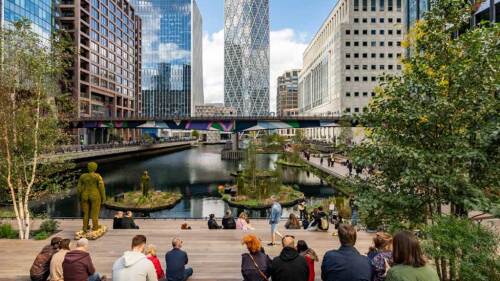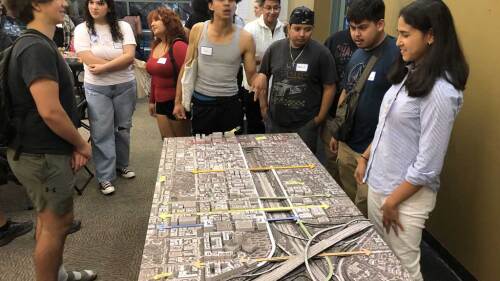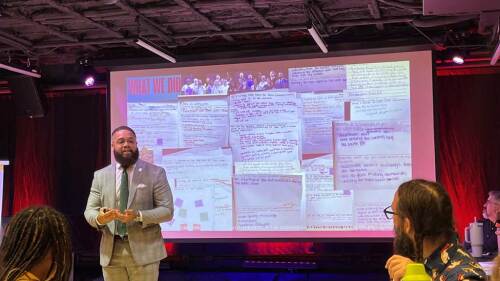Ten developments from across the Americas have been selected as winners of the Urban Land Institute’s (ULI) 2025 ULI Americas Awards for Excellence.
ULI began the Awards for Excellence program in 1979 to recognize superior development efforts in the private, public, and nonprofit sectors. Winning projects represent the highest standards of achievement in the land use profession and encompass a wide range of land uses, sizes, investments, and geographic locations. The awards are open to projects and programs in the ULI Americas region that are substantially complete, financially viable, and in stable operation. The program evaluates submissions on overall excellence, including achievements in marketplace acceptance, design, planning, technology, amenities, economic impact, management, community engagement, innovation, and sustainability, among others.
This year, 94 projects and programs from across the Americas region were submitted for the competition. From this impressive field, the 15-member jury, composed of development, finance, planning, urban design, architecture, and landscape architecture experts, selected 18 finalists.
The 2025 ULI Americas Awards for Excellence winners include:
Crook Horner Lofts, Baltimore, Maryland
Crook Horner Lofts is catalyzing urban regeneration in downtown Baltimore by introducing modern, flexible live/workspaces designed for creative professionals, sparking economic and cultural vibrancy at the street level.
Dayton Arcade, Dayton, Ohio
Dayton Arcade transforms a historic, nine-building complex into a vibrant mixed-use hub—reviving its iconic Rotunda and reconnecting housing, retail, and innovation spaces at a city-block scale. Anchored by a university-led Innovation Hub and a new hotel, the project generated over $135 million in investment and earned recognition for its bold adaptive reuse and civic impact.
Hunter’s Point South Park, Long Island City, New York
Hunter’s Point South Park in Long Island City, Queens, is a transformative 11-acre waterfront park that reimagines a once-industrial shoreline as a resilient, inclusive public space. The park integrates tidal wetlands, stormwater management, and vibrant community amenities, serving as a “front yard” to over 3,000 new housing units, most of which are affordable.
Mercado Urbano Tobalaba (MUT), Santiago, Chile
This innovative $600 million, transit-oriented “microcity” wraps around Chile’s busiest metro station, featuring a dynamic mix of office towers, retail, public spaces, underground parking, a bike hub, and an amphitheater. Encompassing nearly 3 acres, MUT integrates 88,000 m² of green and communal areas, timber skybridges, circular economy systems, and clean energy operations.
Pearl House, New York City
Pearl House is a bold and successful office-to-residential conversion. The 1970s tower was transformed into 588 apartments without zoning or financing incentives through creative structural redesign, phased leasing, and high-efficiency systems. With premium amenities and bold reuse strategies, the project reactivates a once-quiet part of Lower Manhattan.
Populus, Denver, Colorado
Populus is the first carbon-positive hotel in the United States, setting a new benchmark for sustainable urban hospitality. Located in downtown Denver, the hotel combines bold, biomimetic architecture inspired by an Aspen tree with a commitment to environmental stewardship, offsetting more carbon than it emits through design, operations, and reforestation. Its distinctive form and focus on public engagement make it a landmark for climate-forward, design-led development.
Sister Lillian Murphy Community, San Francisco
The Sister Lillian Murphy Community redefines affordable family housing with 152 apartment homes—ranging from studios to five-bedrooms—serving households earning up to 80% of the area median income. Located on a reclaimed brownfield in San Francisco’s thriving Mission Bay, the building is organized into four articulated wings connected by open-air walkways, maximizing natural light and ventilation. Multilevel landscaped spaces foster community interaction, creating a context-sensitive, people-centered living environment.
Tom Lee Park, Memphis, Tennessee
Blending civic design focused on equity, environmental restoration, and inclusive programming, Tom Lee Park features distinctive public spaces, educational opportunities, and cultural events. In its first year, it welcomed more than one million visitors, reflecting the transformative power of thoughtful and equitable urban investment and design. The park is the centerpiece of a century-long dream to connect Memphis with its riverfront. Named for Tom Lee, a Black laborer who heroically rescued 32 people from a capsized steamboat in 1925, the park honors his legacy of courage, generosity, and humanity.
Trinity Commons, New York City
Trinity Commons, a 26-story mixed-use development in Manhattan’s Financial District, seamlessly integrates 90,000 square feet of community-focused space with institutional-grade office floors. The lower levels house public-facing amenities, including a gymnasium, classrooms, and performance space, while the tower floors generate revenue that sustains ongoing community operations. The building’s distinctive façade echoes the adjacent historic Trinity Church, and its LEED Gold certification represents a commitment to sustainable design. Shaped through extensive community engagement, the project reflects Trinity’s urban stewardship and its long-term investment in the social and economic fabric of the city.
Waterworks, Toronto, Ontario
Waterworks revitalizes a historically significant block in downtown Toronto through the integration of diverse programs. The mixed-use development conserves and expands a heritage art deco building, and former public works facility, transforming its machine hall into a vibrant contemporary food hall. Combined with a YMCA and residential units, including affordable housing and a youth shelter, the design aims to break down socio-economic barriers, enhancing the urban experience and establishing a benchmark for design excellence in the greater King West community.
The public can view the winners, finalists, and submissions at the 2025 ULI Americas Awards for Excellence gallery.
“There was an incredible swath of nominees from North America, Central America, and South America this year, which made selecting winners from an outstanding pool of finalists a challenge,” said jury chair Jackie Knight, President, The Ackerberg Group. “The jury was impressed by the diversity of entries, especially the number of developments that focused on creating spaces that build and connect communities in unique ways. It is not an ‘easy’ time to develop, and these award-winning developments found creative ways to build partnerships and execute critical work, enhancing the built environment for us today as well as for generations to come.”
ULI Americas Awards for Excellence finalists were selected by a multidisciplinary jury of ULI members, including experts in development, finance, planning, urban design, architecture, and landscape architecture.
In addition to Knight, the 2025 jury includes Shawn Barney, managing director, CLB Porter, New Orleans; Robyn Brown, principal and practice group manager for placemaking, Arcadis, Toronto; Lisa Cholmondeley, principal, Gensler, Washington, D.C.; Kacey Cordes, vice president and director of operations, U.S. Bancorp Impact Finance, St. Louis; Marco Esposito, principal, SWA, San Francisco; Allen Folks, principal, Folks Planning, Sacramento, California; Aron Gooblar, executive vice president of development, Washington Square Partners, New York; Julie Hiromoto, partner and director of integration, HKS, Dallas; Willie Lanier, CEO, Lanier United, Kansas City; Stephanie Pankiewicz, partner, LandDesign, Washington, D.C.; Kyle Reis, president and CEO, Cooper Carry Inc., Atlanta; May So, partner, Mithun, Seattle; Rebecca Tudor, co-owner, Twinrose Investments, Dallas; and Kishore Varanasi, senior principal and director of urban design, CBT Architects, Boston.
ULI Announces 14 Developments as Winners of the 2025 Asia Pacific Awards for Excellence














